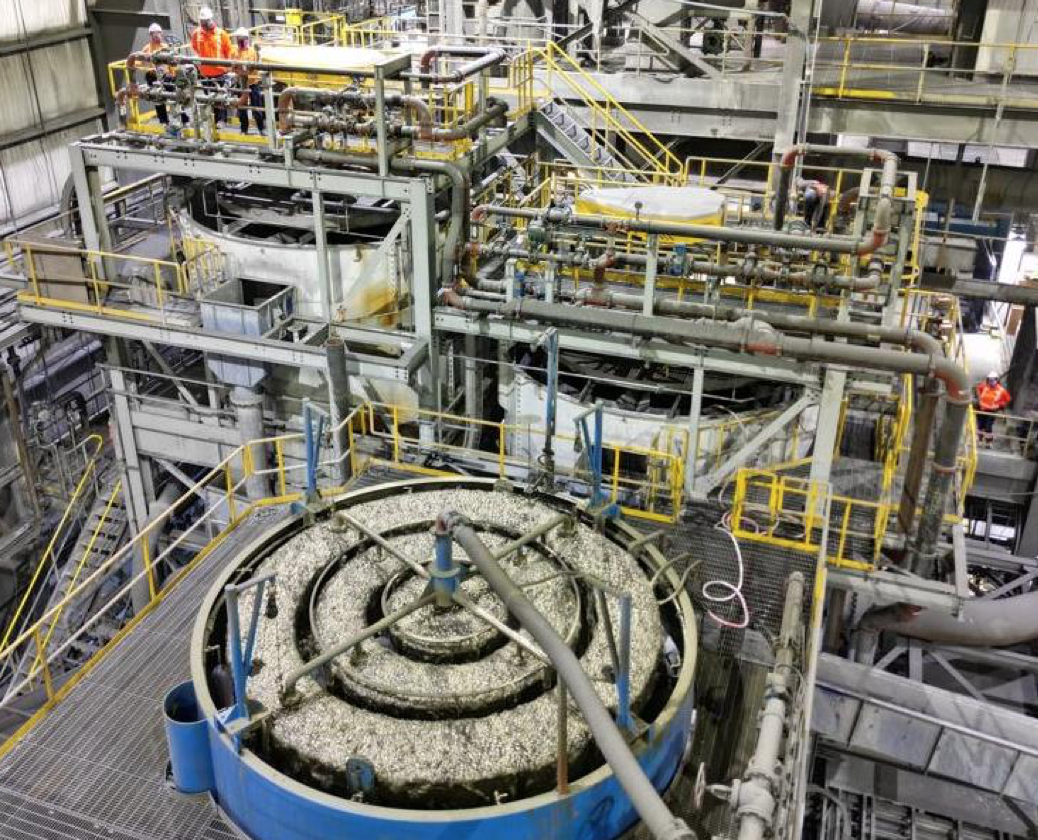Sign up for daily news updates from CleanTechnica on email. Or follow us on Google News!
New thin film solar technology has been a long time breaking into widespread use compared to traditional silicon solar modules, but the day is finally coming, along with the promise of lower costs and a smaller environmental footprint. Coincidentally or not, the Inflation Reduction Act of 2022 is here to help. The latest example is the gigantic 800-megawatt Double Black Diamond solar farm in Illinois, sporting thin film solar modules from the US firm First Solar and a financial assist from the IRA.
Thin Film Solar Meets The Inflation Reduction Act
With the thin film solar modules in hand, the Double Black Diamond olar project (800 MWdc/593 MWac) will rank as the biggest solar farm east of the Mississippi River. Developer Swift Current Energy is not shy about crediting the IRA with enabling the project to progress smoothly towards completion early next year. This morning the firm announced that it closed on a key tax equity investment from Google made possible by provisions in the IRA.
“The tax equity financing utilizes Energy Communities and domestic content adders, provided in the Inflation Reduction Act,” Swift Current explained. The firm previously announced construction financing for the project, provided by Mitsubishi UFJ Financial Group, Societe Generale, Truist, and ING.
In a press statement, Swift Current CEO and co-founder Eric Lammers sent up a gentle but firm warning signal to fossil energy stakeholders that are determined to obstruct renewable energy investing. “We are delighted to join forces with Google on a ground-breaking structure that will support Double Black Diamond Solar and serve as a guide for other major projects to come,” he said, anticipating that his company and other solar developers will be able to replicate the Google arrangement elsewhere for rapid scale-up.
Swift Current Banks On Thin Film Solar For Maximum Impact
In the early 2000s, the relatively low solar conversion efficiency of thin film solar technology was an obstacle to widespread adoption. Once conversion efficiency began to improve, solar developers began to focus on the advantages of thin, lightweight, flexible films over rigid, heavy silicon technology (see more thin film background here).
Swift Current is a case in point. Back in January of 2022, the company placed a 1.2 gigawatt order for First Solar’s thin film solar modules, with delivery to start in 2023 and extending into this year.
“We pride ourselves on responsibly developing high impact projects for our host communities and constructing projects safely, taking a considerate approach every step of the way,” explained Swift Current president Matt Birchby, adding that “it’s essential for Swift Current to have the highest-performing, safest and most cost-effective products.”
There could be plenty more where that came from. By 2022 Swift Current already had about 1.1 gigawatts’ worth of solar projects under its belt, with plans in the works for a project pipeline totaling six gigawatts. Meanwhile, as of 2022, First Solar anticipated racking up a total capacity of 16 gigawatts among its facilities worldwide over the following two years.
Thin Film Solar & A More Sustainable Solar Industry
If you caught that thing about responsibly developing, that covers a lot of ground. Aside from the direct impacts of the construction project itself, there are also carbon emissions and other environmental impacts related to the solar module manufacturing and supply chain.
Now that the solar market is maturing, corporate energy buyers and other stakeholders are paying more attention to the soup-to-nuts environmental footprint of solar projects. That’s where thin film solar can out-perform conventional silicon technology. “Due to our resource-efficient manufacturing process, First Solar modules have a carbon footprint that is up to 2.5 times lower, a water footprint that is up to three times lower and an energy payback time that is up to two times faster than conventional crystalline silicon solar panels manufactured in locations with carbon intensive grids,” First Solar asserts.
Don’t just take their word for it. The company also cites an EU assessment concluding that CdTe technology is preferable for commercial and utility-scale development in terms of lifecycle costs and impacts.
Large-scale energy buyers are also looking for developers that are engaged in collaborative decarbonization efforts. As a member of the global RE100 initiative, for example, First Solar has set a goal of 100% zero-carbon electricity in the US for its thin film solar manufacturing facilities by 2026, towards a global renewable energy goal for electricity by 2028.
The influence of the RE100 network on solar development was on display earlier this month when a fellow RE100 member, General Motors, announced a power purchase agreement for a solar project in Arkansas that is deploying First Solar’s thin film technology.
First Solar is also registered with the global electronics eco-label and disclosure organization EPEAT. In particular, the company draws attention to its multi-national network of scalable thin film solar recycling facilities, capable of recovering 90% of the semiconductor material for use in new solar modules. The company also claims a 90% recovery rate for glass from the modules.
From Coalfields To Solar Power
Swift Current is new to the CleanTechnica radar, but you’ll probably be hearing about it on a regular basis moving forward. The company launched in 2016 and is majority-owned by the IFM Global Infrastructure Fund portfolio company Buckeye Energy Holdings. Other owners include the IFM Net Zero Infrastructure Fund and Lookout Ridge Energy Partners.
Among other recent developments, earlier this year Swift Current’s Mineral Basin Solar project in Pennsylvania was tapped for an award of up to $90 million from the US Department of Energy. The project aims to convert a former coal mine into a solar farm. The funds were allocated through the 2021 Bipartisan Infrastructure Law and details are still under negotiation.
If all goes according to plan, the 402-megawatt project will reclaim about 2,700 acres of coal mining lands Pennsylvania’s Clearfield County for solar development, while also establishing a model for similar coal-to-solar projects around the country.
No word yet if thin film solar is part of the Mineral Basin plan, but that’s just for starters as far as Swift Current’s activity in Pennsylvania goes. “Swift Current is developing an additional portfolio of more than 2,000 MW of coal-to-solar, wind energy and battery storage projects in Pennsylvania,” the company remarked in a press release dated March 25, 2024.
If that sounds pretty ambitious, it is. The American Clean Power Association totaled up 2,369 megawatts’ worth of installed solar, wind, and storage projects in Pennsylvania, and Swift Current’s pipline would add another 2,000 megawatts on top.
Follow me via LinkTree, or @tinamcasey on Threads, LinkedIn, and Instagram.
Photo (screenshot): The biggest solar power plant east of the Mississippi River weighs in at a massive 800 megawatts and deploys new thin film solar technology from the US firm First Solar (courtesy of Swift Current Energy).
Have a tip for CleanTechnica? Want to advertise? Want to suggest a guest for our CleanTech Talk podcast? Contact us here.
Latest CleanTechnica.TV Videos
CleanTechnica uses affiliate links. See our policy here.
CleanTechnica’s Comment Policy




